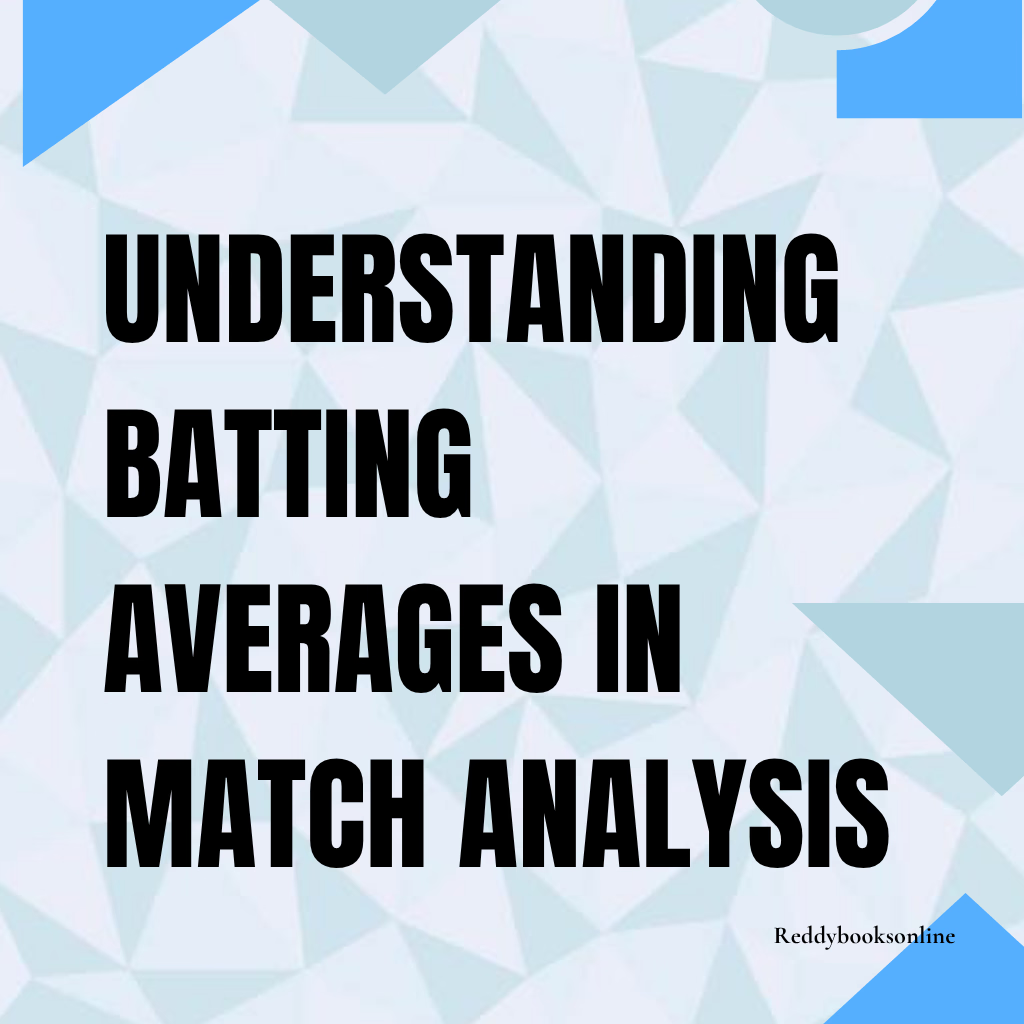Cricket is a sport where numbers often tell the real story behind performances. One of the most widely discussed metrics is the batting average. For fans eager to understand match insights better, learning about the understanding batting averages in match analysis is essential. While averages don’t tell the whole story, they remain one of the most powerful indicators of consistency and reliability in cricket.
At Reddybooksonline, we simplify data-driven analysis so that fans can enjoy the game with context, not just numbers.
What Is a Batting Average
A batting average is calculated by dividing the total runs scored by the number of times a batter has been dismissed. It represents how many runs a player typically scores per innings. A higher average generally reflects consistency and the ability to contribute regularly to a team’s success.
Why Batting Averages Matter in Match Analysis
Analysts and fans use averages to compare players, forecast performances, and judge reliability under different conditions. They matter because:
- A strong average shows a batter can anchor an innings.
- Lower averages may expose weaknesses against certain types of bowling.
- Averages over time reveal career stability versus short bursts of form.
Understanding this context helps fans interpret how a player may impact a game.
Strengths of Using Batting Averages
1. Consistency Measurement
Averages highlight consistent contributors, especially in longer formats like ODIs and Tests.
2. Comparison Across Players
They provide a common ground to compare batters across teams and eras.
3. Building Team Strategies
Captains and coaches rely on averages to decide batting orders and match tactics.
Limitations of Batting Averages
1. Format Differences
Averages mean different things in Tests, ODIs, and T20s. A strong T20 player may have a modest average but a high strike rate.
2. Conditions and Venues
Averages don’t always reflect how well a batter performs in challenging conditions like seaming tracks or spin-friendly pitches.
3. Not Reflecting Impact
Sometimes a short but aggressive innings contributes more to a team than a slow 50. Averages alone don’t show this impact.
How to Use Batting Averages in Smarter Predictions
The understanding batting averages in match analysis lies in combining averages with other stats.
- Look at strike rates alongside averages in T20s.
- Compare averages across venues to understand suitability.
- Track averages in recent form rather than career totals for short tournaments.
- Consider role in the team openers and finishers are judged differently.
When combined with context, batting averages become powerful tools for predictions.
Why Fans Should Learn About Averages
For fans, averages are a great entry point into match analysis. They help explain why analysts rate some players higher, why certain batters are more reliable in pressure situations, and how predictions are built.
That’s why Reddybooks emphasizes clear explanations, so fans can move beyond numbers and connect with the bigger picture of the game.
Why Reddybooksonline is the Trusted Source
- Simple Data Explanations: Makes complex stats easy to understand.
- Balanced Insights: Combines averages with other metrics for accuracy.
- Fan-Centric Approach: Helps both beginners and advanced fans appreciate match analysis.
By following Reddybooksonline, you’ll always know how to read averages with context and clarity.
FAQs
What is considered a good batting average
In Tests and ODIs, an average above 40 is strong, while in T20s, averages above 30 with a high strike rate are valuable.
Can batting averages alone predict performance
No. They must be combined with strike rates, form, and conditions for accurate predictions.
Why do some batters have high averages in one format but not others
Because each format demands different skills. Tests value patience, while T20s value aggressive scoring.
How can beginners use batting averages
Start by comparing players’ averages in the same format, then layer in strike rates and conditions for more context.
Final Thoughts
Batting averages are one of cricket’s most trusted numbers, but their real value lies in interpretation. By learning understanding batting averages in match analysis, fans can use this stat as a gateway into smarter insights. With Reddybooksonline, averages are explained in simple, engaging ways that make cricket more enjoyable.




